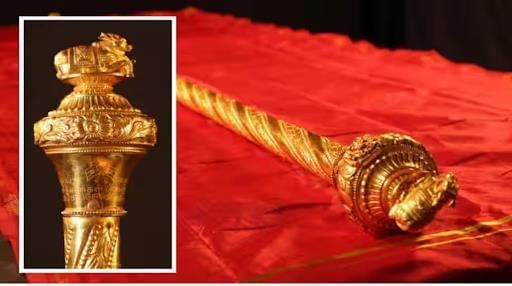The Parliamentary System: Legislature and Executive Chapter Notes | Chapter Notes For Class 8 PDF Download
Introduction

After India gained freedom from British rule, the Constitution allowed every adult to vote and set up the Parliament to make laws.
- India’s independence was achieved through many sacrifices and years of struggle against British rule.
- The Constitution, written after freedom, set rules for governance, including the Universal Adult Franchise, which lets every adult citizen vote, regardless of background, gender, race, or religion.
- People directly elect representatives who become members of the Lok Sabha, and the majority group forms the government.
- The Parliament is the main law-making body, including all elected representatives, and it controls and guides the government’s work, showing it has the people’s consent.
- There have been 17 Lok Sabhas since the first one in 1952, and the 18th Lok Sabha started in June 2024.
Composition of the Parliament of India
The Parliament is the core of India’s government, with two houses and the President working together.
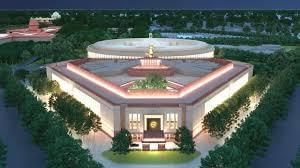 New Parliament Building
New Parliament Building
- The Indian Parliament includes the President and two houses: the Lok Sabha (House of the People, or Lower House) and the Rajya Sabha (Council of States, or Upper House).
- The bicameral system (“bi” means two, “cameral” means chamber or house) was chosen after long discussions during the making of the Constitution.
- Leaders felt one house wasn’t enough for India’s big and diverse challenges, so the Rajya Sabha was added to represent states, supporting federalism.
- Federalism is a system where power is shared between the central government, states, and local governments, balancing national unity and local interests.
- The Rajya Sabha’s members are elected differently from the Lok Sabha to give states a unique voice.
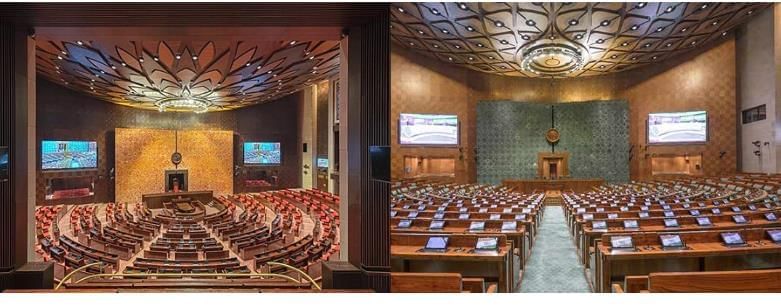 Rajya Sabha and Lok Sabha Chambers
Rajya Sabha and Lok Sabha Chambers
Did You Know?
India’s Constitution draws from global models like Britain’s Parliamentary democracy, enriched by the practical experience of freedom fighters in colonial governance, the legacy of ancient mahājanapadas, and the tradition of collective decision-making in village panchayats.
Constitution of India
Function
The Parliament makes laws and ensures they are followed, with leaders keeping discussions orderly and a team called the Union Executive running the country.
- The Lok Sabha elects a Speaker who runs sessions, allows members to speak, maintains discipline, and ensures rules are followed.
- The Rajya Sabha is led by the Vice President of India, who acts as its chairperson to keep debates fair and orderly.
- The Parliament’s job includes making laws (legislative work) and ensuring they are carried out (executive work), both equally important.
- The Union Executive, which includes the President, Vice President, and Council of Ministers led by the Prime Minister, brings the Parliament’s laws to life.
- The Council of Ministers is chosen from members of both the Lok Sabha and Rajya Sabha, and they are collectively responsible to the Lok Sabha.
Did You Know?
On August 14, 1947, the gold-plated Sengol sceptre, rooted in the Chola era and topped with Nandi, was presented to Pt. Jawaharlal Nehru, symbolizing the transfer of power and righteous governance. It now stands near the Lok Sabha Speaker’s chair.
Translation Services in the Indian Parliament
- To make parliamentary discussions accessible, translation services are provided in multiple Indian languages.
- Initially, simultaneous interpretation was available in 12 languages:
Hindi, English, Assamese, Bengali, Gujarati, Kannada, Malayalam, Marathi, Odia, Tamil, Punjabi, Telugu - Recently, 6 more languages were added:
Bodo, Dogri, Maithili, Manipuri, Urdu, Sanskrit - More languages are expected to be added in the future to promote inclusivity.
Legislative Functions of the Parliament
The Parliament has important jobs to keep India’s democracy strong, like making laws, checking the government, and managing money. These jobs are divided into four main types.
Constitutional Function
- The Parliament protects the core ideas of India’s Constitution to ensure democracy and fairness.
- The Parliament supports parliamentary democracy by letting every adult vote through universal adult suffrage.
- It follows the separation of powers, keeping the legislature (law-making), executive (law-enforcing), and judiciary (courts) separate but balanced.
- It ensures federalism, which means sharing power between the central government and states.
- It upholds Fundamental Rights (like freedom and equality) and Directive Principles of State Policy by making laws and policies.
Lawmaking
- The Parliament’s main job is to make laws, which are rules for the country, through a careful process.
- A law starts as a bill, which is a draft of a proposed law introduced in the Parliament.
- The bill goes through many steps, like discussions and votes, before it becomes an act, which is a law everyone must follow.
- An example is the Right of Children to Free and Compulsory Education Act, 2009 (RTE), which became a law after a long process in Parliament.
- The Constitution sets strict rules to make sure lawmaking is fair and thorough.
Right to Education (RTE) Act – A Journey
- Commonly known as RTE.
- Came into existence: August 2009, though the idea dates back nearly a century.
- Constitutional roots:
Based on the Directive Principles of State Policy.
Constitution-makers aimed to implement it within 10 years of Independence, but it was delayed. - Legal foundation:
In the early 1990s, courts were urged to recognise education as part of the Fundamental Right to Life.
Led to the 86th Constitutional Amendment Act, 2002, which inserted Article 21A:
Mandated free and compulsory education for children aged 6 to 14 years. - Legislative process:
The bill was tabled in the Rajya Sabha and reviewed by a committee.
Funding (for schools, infrastructure, teachers) was a major concern. - By 2008, political consensus was reached.
- Passage and implementation:
Passed by the Lok Sabha in August 2009.
Received Presidential assent, becoming law. - Impact:
Created legal pathways for children to attend school.
Supported the construction of new schools.
Ensured free books and uniforms for children.
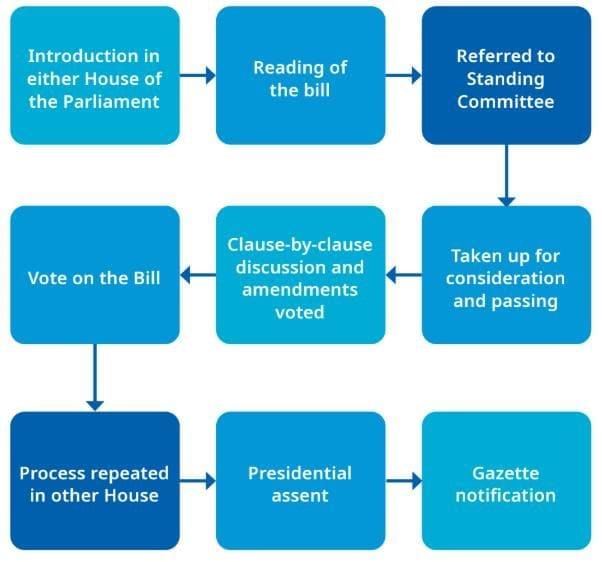 From Bill to Act- Making of Law in Parliament
From Bill to Act- Making of Law in Parliament
- Origins: The beginnings can be traced back to the British Parliament. Many Members of Parliament (MPs) could not read, so a clerk would read the bill's contents aloud for the MPs to discuss. Nowadays, MPs read the bill themselves before the discussions happen.
- Clause: These are sections of a bill that detail specific aspects of the legislation. For example, the Right to Education (RTE) specifies the age range it covers, which is from 6 to 14 years.
- Gazette: This term refers to an official government publication that releases legal documents and important official information.
Did You Know?
Money Bills, which address financial matters like taxation and government borrowing, can only be introduced in the Lok Sabha and require the President’s prior recommendation, highlighting their unique legislative process.
Executive Accountability
- The Parliament makes sure the government’s leaders, like the Prime Minister and ministers, do their jobs properly and answer to the people.
- The Prime Minister and Council of Ministers form the Union Executive, responsible for enforcing laws and running the government.
- They make daily decisions based on the Constitution and its laws.
- They must answer to the Lok Sabha through the Question Hour, a time when MPs ask ministers about government policies and actions.
- Special committees, with MPs from different parties, also meet to question ministries about their policies and decisions.
Poetry and Humour in the Indian Parliament
The Parliament can have a light-hearted and informal side, sometimes using poetry and humour to set the mood.
Example 1: Verse in the Parliament
- On February 1, 2025, while presenting the Union Budget for the year 2025-26, Smt. Nirmala Sitharaman shared a verse from Tirukkural, an ancient Tamil text about ethics and morality:
- Verse: Vaanokki vaalum ulakellaam Mannavan koalnokki vaalung kudi.
- Meaning: Just as living things anticipate rain, citizens expect good governance.
- This caused a lively response with much desk-thumping from the Treasury Benches.
Example 2: Humour in the Parliament
In 2011, during a lively discussion in the Lok Sabha, Parliament member Sushma Swaraj used a poetic line to criticise the government:
- Quote: “Tu idhar udhar ki na baat kar, yeh bata ki kafila kyun luta, humein rahjano se gila nahi, teri rahbari ka sawal hai.”
- Meaning: Don't change the subject; tell us why the caravan was robbed. We have no complaints about the thieves, but this is about your leadership.
The then Prime Minister, Dr. Manmohan Singh, responded with another poetic line:
- Quote: “Maana ki teri deed ke qabil nahin hoon main, tu mera shauq dekh mera intezar dekh.”
- Meaning: I accept that I may not deserve your attention, but you should see my passion and dedication.
Financial Accountability
- The Parliament checks how the government spends money to ensure it’s used wisely and fairly.
- The Parliament approves the annual budget, which shows how money will be spent by different ministries.
- It examines how funds are distributed to ensure they are used properly.
- The government must give the Parliament timely and accurate information about its spending.
Did You Know?
Part V of the Indian Constitution begins with Chapter I, detailing the roles of the President, Vice President, and Council of Ministers, before outlining Parliament’s functions in Chapter II, reflecting a structured approach to governance.
Executive Functions of the Parliament
The Parliament’s executive work involves leaders who run the country and make sure laws are followed. This section looks at the roles of the President and the Prime Minister with the Council of Ministers.
The President
- The President is the Head of State and the official head of the Executive, but the Prime Minister and Council of Ministers run the government.
- The President appoints the Prime Minister and other ministers, calls Parliament to meet, and signs bills to make them laws.
- The Council of Ministers advises the President, who usually follows their advice.
- In special cases, like when no party has a clear majority in the Lok Sabha, the President can make decisions on their own.
The Prime Minister and the Council of Ministers
- The Prime Minister is the main leader of India’s government, working with ministers to make decisions and run the country.
- The President appoints the leader of the majority party or coalition in the Lok Sabha as the Prime Minister, who needs the support of most MPs.
- The Prime Minister leads the Council of Ministers, advises the President, coordinates different ministries, and shapes national policies.
- The Council of Ministers, chosen from MPs of both Lok Sabha and Rajya Sabha, makes decisions and runs the government, answering to the Lok Sabha.
- Civil servants, also called administrators or bureaucrats, help ministers by carrying out laws and keeping government departments running smoothly.
Did You Know?
In 1956, Railway Minister Lal Bahadur Shastri resigned after a train accident, taking moral responsibility despite not being directly at fault, demonstrating a strong commitment to accountability in leadership.Lal Bahadur Shastri
Differences Between the Legislature and the Executive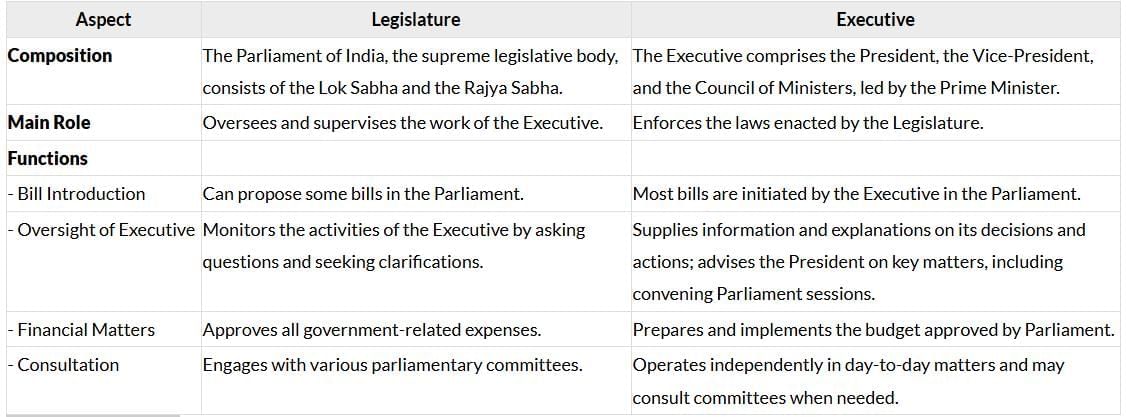
Who is the official head of the Executive in India, and what is their primary role in relation to the Prime Minister and Council of Ministers?
The Judiciary — Role of Checks and Balances
The Judiciary is the part of the government that explains and applies laws, making sure everyone follows the Constitution. It works through courts to keep democracy fair and balanced.
- The Judiciary interprets and applies laws, especially when there are disputes between people or groups.
- It acts as the guardian of the Constitution, ensuring the Legislature and Executive follow its rules.
- It checks that laws made by Parliament and actions by the Executive do not break the Constitution’s principles.
- It protects Fundamental Rights and resolves disputes to keep society and government working fairly.
- The separation of powers and checks and balances stop any one part (Legislature, Executive, or Judiciary) from becoming too powerful.
Legislative and Executive Functions at the State Level
Just like the central government has a Parliament, each state has its government with a legislature and executive to make and carry out laws. These state governments work on specific state matters.
- Each state has a State Assembly, similar to the Parliament, with Members of Legislative Assembly (MLAs) who make laws.
- MLAs make laws for subjects on the State List (like local issues) and the Concurrent List (shared with the central government).
- State governments have both legislative (law-making) and executive (law-enforcing) jobs, like the central government.
Union List, State List, and Concurrent List
The Indian Constitution provides three lists to define legislative powers:
- Union List:
- Subjects only the Union Government can legislate on.
- Examples: Defence, Foreign Affairs, Currency. - State List:
- Subjects only the State Governments can legislate on.
- Examples: Police, Public Health, Local Government. - Concurrent List:
- Subjects where both the Union and State Governments can make laws.
- Examples: Education, Forests, Marriage, Adoption. - In case of conflict on a Concurrent List subject, the Union law prevails over State law.
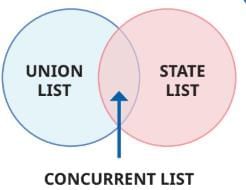
Parallel Structure of Union and State Governments in India
The structure at the state level imitates the one at the union level. You can see this structure across both levels in the table:
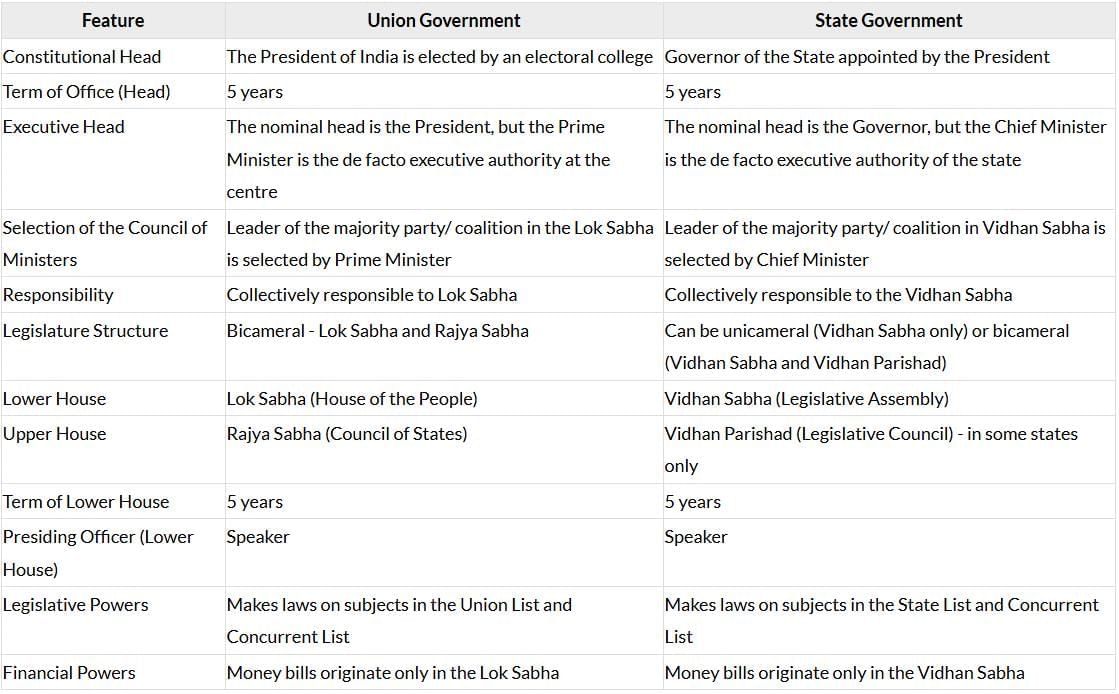
Structure of State Legislatures
- State legislatures can have one or two houses, depending on the state, to make laws and run the state government.
- State legislatures can be unicameral (one house, called Vidhan Sabha) or bicameral (two houses, Vidhan Sabha and Vidhan Parishad).
- The Vidhan Sabha is the main legislative assembly, like the Lok Sabha, and the Vidhan Parishad is the upper house, like the Rajya Sabha.
- Only six states have a bicameral system: Andhra Pradesh, Bihar, Karnataka, Maharashtra, Telangana, and Uttar Pradesh.
- The remaining states have a unicameral system with only a Vidhan Sabha.
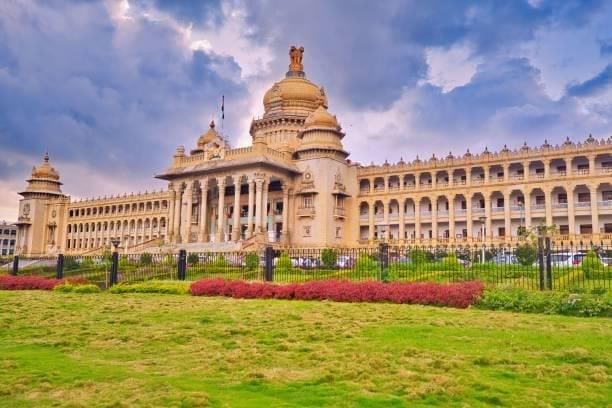 Parliament House in Karnataka
Parliament House in Karnataka
Which of the following states in India has a bicameral legislature, consisting of both a Vidhan Sabha and a Vidhan Parishad?
Challenges to the Effective Functioning of the Legislatures
The Parliament and State Assemblies have big jobs like making laws, checking the government, and approving budgets, but they face problems that make their work harder. This section explains those challenges and how people can help fix them.
Importance of Legislatures
The Parliament and State Assemblies make laws, oversee government work, approve budgets, and discuss national policies, development plans, international relations, and people’s complaints.
They provide a place for leaders to talk about important issues and make decisions that help the people.
Issues in Functioning
Problems include members not showing up regularly, not cooperating, or having poor-quality debates.
The Question Hour, where ministers answer MPs’ questions, is sometimes disrupted, making it hard to hold the government accountable.
Meeting Schedules
The Parliament meets three times a year in the Budget, Monsoon, and Winter Sessions, with daily sittings of about 6 hours, which can be extended for urgent work.
State Assemblies have similar schedules, but disruptions can cut sessions short, delaying important work.
Concerns About Members
Some Lok Sabha members have criminal cases against them, which raises concerns about their ability to represent people.
Many sessions have angry or biased debates that don’t focus on solving people’s problems, and some bills take years to pass.
Media’s Role
The media highlights issues in the legislature, sometimes using cartoons to show problems humorously, which is common in strong democracies.
It informs people about what their leaders are doing and what needs to change.
People’s Role
Democracy grows stronger when citizens stay informed, ask questions, share views, and join public discussions, including through digital platforms offered by government departments.
More young leaders and diverse voices are joining public life, and technology helps people stay connected to governance.
Future voters, like students, will play a big role in improving the Parliament and State Assemblies by making smart choices and participating.
Did You Know?
Former PM Atal Bihari Vajpayee emphasised in a Lok Sabha speech, “Governments will come and go, parties will rise and fall, but the nation and its democracy must endure,” underscoring the importance of preserving democratic values amid political changes.Atal Bihari Vajpayee
Key Points to Remember: Before We Move On
- India’s Parliamentary system ensures that power is shared, decisions are debated, and leaders are held accountable.
- The Legislature makes laws, the Executive implements them, and the Judiciary ensures that they follow the Constitution.
- The Parliament represents the voice of the people and reflects the federal spirit of our democracy.
- Both at the Centre and in the states, structures are designed to balance representation, responsibility, and unity.
- Checks and balances between institutions help protect citizens’ rights and uphold democratic values.
- The functioning of the Parliament needs to become more efficient and productive so that the country’s progress is not thwarted.
FAQs on The Parliamentary System: Legislature and Executive Chapter Notes - Chapter Notes For Class 8
| 1. What is the composition of the Parliament of India? |  |
| 2. What are the main functions of the Parliament of India? |  |
| 3. How does the Parliament of India exercise its legislative functions? |  |
| 4. What role does the judiciary play in maintaining checks and balances in the Indian political system? |  |
| 5. What are some challenges faced by the legislatures at the state level in India? |  |


